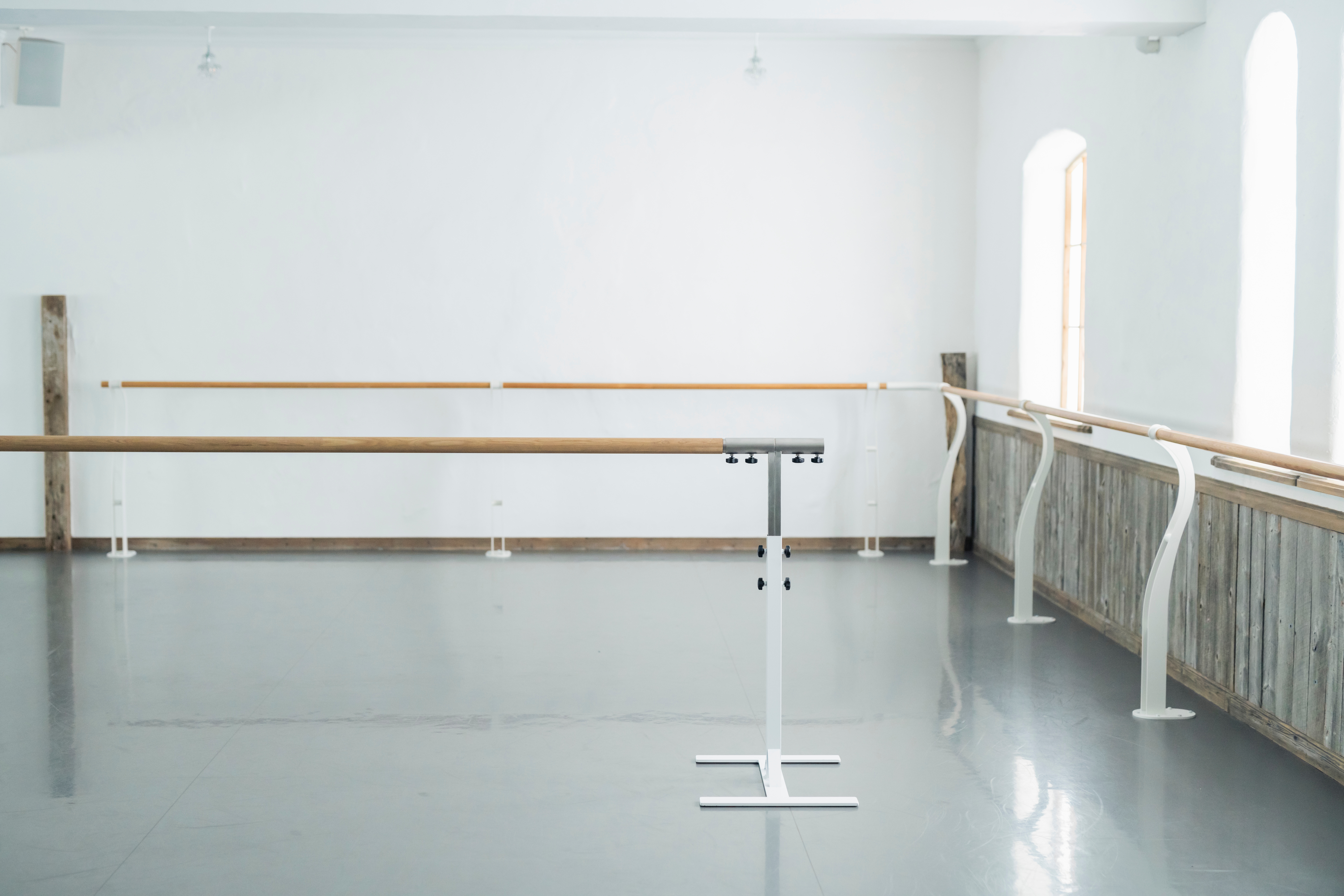When it comes to dance, the floor beneath your feet matters just as much as the steps above it. Whether you’re outfitting a professional dance studio or planning a high-energy performance event, choosing the best dance floor for studio use or selecting from dance floor options for events can significantly impact dancer performance, safety, and long-term injury prevention.
In this guide, we break down the most common types of dance floors—including sprung subfloors, cushion-backed marley vinyl, and standard marley vinyl—and explain which dance styles they’re best suited for. We'll also explore how shock absorption, area deformation, and energy restitution factor into each floor’s design and performance.
Why the Right Dance Floor Matters
Different dance styles place unique demands on the body and the surface. A floor built for ballet won't perform the same way under the explosive movements of hip-hop or the sliding footwork of ballroom dance. That's why understanding your options is essential for studios and event planners alike.
1. Sprung Floors – The Gold Standard for Dance Studios
If you're searching for the best dance floor for studio applications, sprung floors are your top-tier option. These systems are engineered to reduce the risk of injury by absorbing shock and returning energy back to the dancer—ensuring smoother landings, improved performance, and long-term durability.
Key Features:
- Shock Absorption: Reduces stress on joints and ligaments during repetitive movements.
- Area Deformation: Ensures that when a dancer lands or moves, the impact is distributed across a wider surface, minimizing the "dead spots" that can lead to injury.
- Energy Restitution: Returns energy efficiently to aid in jumps, leaps, and turns.
Best For:
- Ballet
- Contemporary
- Jazz
- Modern
Studio Tip: Many professional dance facilities pair a high-performance sprung subfloor with a surface vinyl (like marley) that matches their specific genre needs.
2. Cushion-Backed Marley Vinyl – The Versatile Performer
For studios or venues that want a slightly softer feel without a full sprung floor investment, cushion-backed marley vinyl is a fantastic hybrid solution. It offers moderate shock absorption while being easy to install and maintain.
Key Features:
- Slight built-in cushioning for comfort
- Slip-resistant finish for safety
- Excellent surface for both barefoot and soft-soled styles
Best For:
- Lyrical
- Hip-Hop
- Modern
- Multi-purpose studio spaces
Event Tip: This surface works well for portable stage setups or temporary event flooring when combined with a roll-out sprung underlay.
3. Standard Marley Vinyl – The Professional Finish
Marley vinyl remains the industry favorite for its smooth, controlled surface that supports precise movements and allows dancers to glide, turn, and stop with confidence. However, it requires an appropriate subfloor to provide the shock absorption dancers need.
Key Features:
- Durable and lightweight
- Easy to roll out and store
- Provides consistent traction across the surface
Best For:
- Tap
- Ballroom
- Flamenco
- Ballet (when paired with a sprung subfloor)
Studio & Event Tip: Standard marley vinyl is frequently used on touring stages and in temporary venues where dancers need a reliable, fast-install surface.
| Dance Style | Recommended Subfloor | Recommended Vinyl Surface |
|---|---|---|
| Ballet | Pro Forma I | Canvas 2.0 MM |
| Modern | Pro Forma I | Canvas 2.0 MM |
| Tap | Pro Forma II | Canvas 2.0 MM |
| Jazz | Pro Forma I | Canvas 2.0 MM |
| Hip Hop | Pro Forma I or Pro Forma II | Canvas 2.0 MM |
| Ballroom | Pro Forma II | Canvas 2.0 MM |
| Flamenco | Pro Forma II | Canvas 2.0 MM |
| Lyrical | Pro Forma I | Canvas 2.0 MM |
| Contemporary | Pro Forma I | Canvas 2.0 MM |
| Multi-purpose | Pro Forma I or Pro Forma III | Canvas 2.0 MM or Cushion-Backed Marley |
Product Descriptions:
- Pro Forma I Sprung Dance Floor System: A low-profile subfloor offering uniform shock absorption and vertical deflection, minimizing ramp and threshold needs. Ideal for various dance disciplines when paired with Connor Dance Vinyl.
- Pro Forma II Sprung Dance Floor System: Features a mid-profile height suitable for multi-purpose use, providing consistent shock absorption and vertical deflection. Best used with Connor Dance Vinyl for optimal performance.
- Pro Forma III Sprung Dance Floor System: Designed with a varying height profile, making it ideal for multi-purpose applications while ensuring uniform shock absorption and vertical deflection. Compatible with all dance disciplines when used with Connor Dance Vinyl.
- Connor Stage: A comprehensive stage system combining a subfloor designed to handle heavy loads and continuous movement with a unique surface panel, offering best-in-class surface characteristics.
- Canvas 2.0 MM: A Marley vinyl surface providing a durable and consistent texture, suitable for various dance styles, including ballet and tap.
- Prima 4.5 MM: Developed with protection and performance in mind, this vinyl offers a unique surface that supports dancers' movements with dimensional stability and wear resistance. The closed-cell foam backing makes it suitable for ballet, hip-hop, contemporary, or modern dance.
- Prima 7.5 MM: Featuring a dual-density foam backing, this vinyl provides long-term impact protection, making it a safe solution for ballet, hip-hop, contemporary, and modern dance styles.
Final Thoughts
When selecting the best dance floor for studio or evaluating dance floor options for events, it’s essential to look beyond surface aesthetics. Think performance, longevity, and safety. The right combination of subfloor engineering and surface finish can elevate your space and protect your dancers for years to come.
If you're unsure which flooring solution is right for your specific dance style or event layout, reach out to a sports flooring specialist who understands how subfloor systems and vinyl surfaces work together to create an elite-level dance environment.
Looking for expert guidance on the best dance floor setup for your space?
Contact our team to learn more about custom solutions for studios, theaters, schools, and performance venues.


